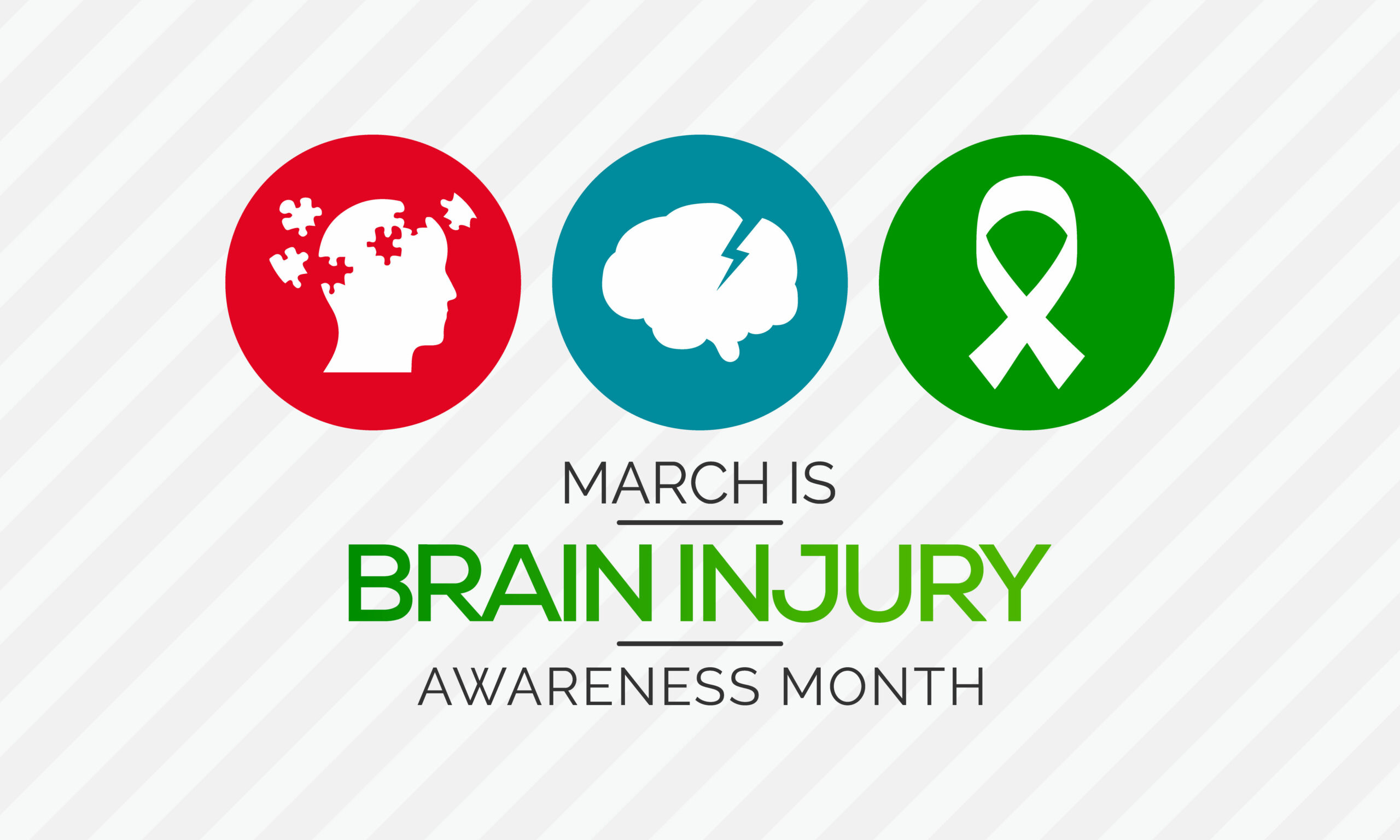

March is Brain Injury Awareness Month, and organizations such as the Brain Injury Association of America (BIAA) want you to know more about these dangerous injuries and their aftermath. Here’s a little information to help.
According to the BIAA, injuries to the brain that are not hereditary (passed down in families), congenital (present at birth), degenerative (get worse over time), or caused by birth trauma are considered acquired brain injuries, or ABIs. These injuries involve changes to brain activity that affect the physical integrity, metabolic activity, or functional ability of nerve cells in the brain.
There are many possible causes of ABIs. Electric shock is a typical cause of ABI, as is oxygen deprivation, stroke, seizure disorders, exposure to toxins, trauma, and tumors. Lightning strikes, certain infectious diseases such as pneumococcal and meningococcal meningitis, and substance abuse and overdoses are also common causes of ABIs.
A traumatic brain injury, or TBI, is a type of ABI that occurs when a sudden trauma causes damage to the brain.
The US Centers for Disease Control and Prevention define TBIs as brain injuries “caused by a bump, blow or jolt to the head, or a penetrating head injury that disrupts the normal function of the brain.” TBIs are most often the result of falls, but can also result from being hit by an object, a motor vehicle accident, or an assault.
TBIs are a common occurrence in this country. In fact, every 21 seconds in the US, someone sustains a TBI. According to the CDC, 2.8 million Americans suffer a TBI every year, and more than 56,000 people die as a result of their TBI. These injuries disable six times more people each year than spinal cord injuries, MS, HIV/AIDS, and breast cancer combined.
TBIs range from mild, when there’s a brief alteration in mental status, to severe, when there’s an extended period of unconsciousness and resulting disability. Most TBIs that occur each year are mild, commonly called concussions.
Concussions are caused by an injury, such as a blow to the head, that causes the brain to move rapidly back and forth inside the skull. Some people might sustain a cut or bruise on the face or head, but generally, there are no visible signs of a concussion.
You don’t have to lose consciousness to have a concussion, but many people do. Sometimes, someone with a concussion will look a little dazed and might forget what happened just before the trauma occurred. Most people fully recover, some within a few hours, some need a few weeks.
Concussions have become more common in sports on every level. This may be due to a growing emphasis on the risks for these injuries, especially in contact sports such as football. Fortunately, many coaches and trainers have been taught to recognize symptoms of concussion in their players and participants.
Severe brain injuries are those that cause unconsciousness or coma that generally lasts no more than a few weeks. With a severe brain injury, the person may suffer life-changing and debilitating problems. Some people will remain in a coma and others will enter a different type of unconscious or minimally conscious state.
People with severe brain injuries rarely recover. Those who do are typically left with a range of physical and neurological deficits that are difficult to overcome.
Brain injuries that do heal, don’t heal the same way as other injuries such as broken arms or legs. Healing involves a recovery of brain function, and how much and how fast varies. No two brain injuries are alike, so each person’s response to injury and recovery from it are different.
In general, patients with mild brain injuries tend to recover well. There may be minor residual symptoms such as headaches that improve over time. Approximately 60 percent of those with moderate brain injuries make a positive recovery, but an estimated 25 percent are left with a moderate degree of disability.
Only 25 to 33 percent of people with severe brain injuries achieve positive outcomes. About 33 percent do not survive, and the last few percent remain in a persistent vegetative state, in which they wake and sleep but are unconscious of the world around them.
There are a few steps you can take to help reduce the chances of sustaining a traumatic brain injury, including:
• Drive safely. Buckle-up every time and never drive under the influence of drugs or alcohol.
• Wear a helmet when riding a motorcycle, bicycle or horse; playing a contact sport; skiing or snowboarding; or inline skating.
• Evaluate your fall risk. Review your medications with your doctor or pharmacist to identify any that may cause dizziness. Have your eyes examined regularly and update your glasses prescription as needed.
• Use appropriate protective equipment to make your home and yard safe for children.





Leave a Reply